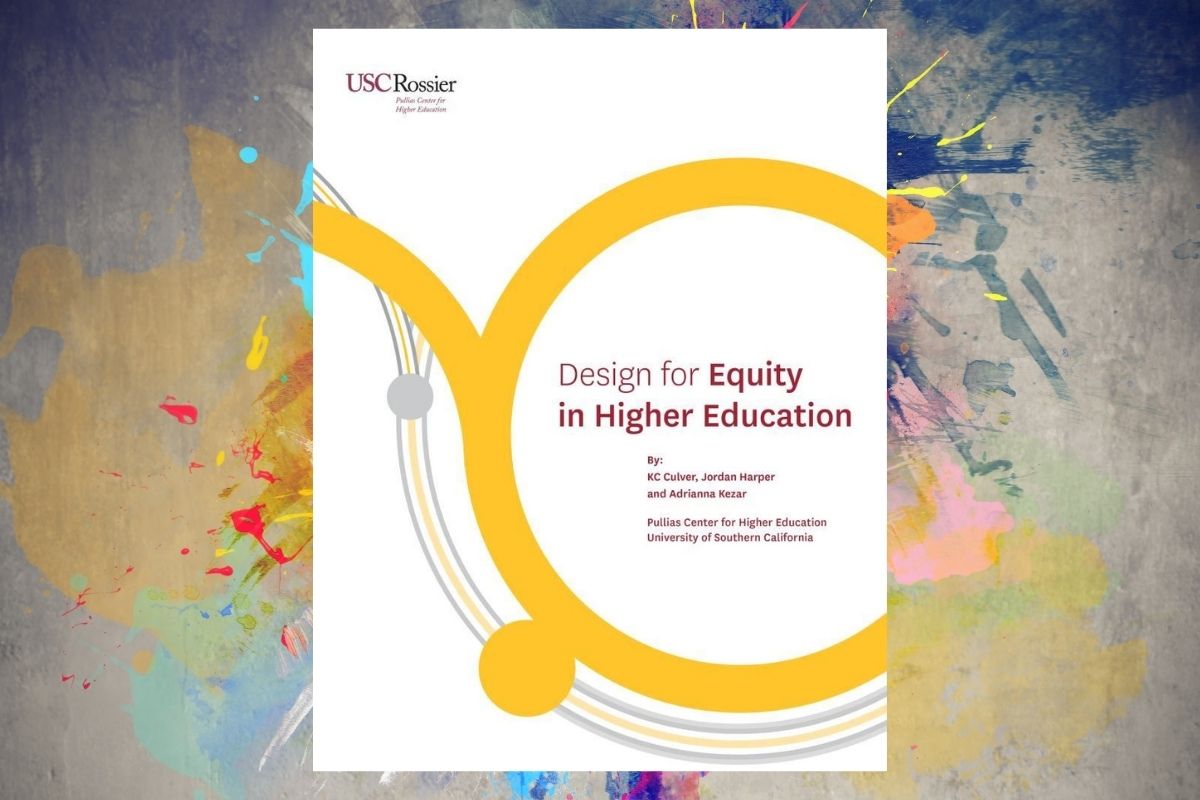
New Pullias Center Report Adapts Liberatory Design Thinking Model for Higher Education Challenges
New research and a publication supported by funding from the TIAA Institute and the National Science Foundation as part of The Delphi Project puts equity front and center with a new model that considers the unique challenges in design thinking related to policy making in higher education.
The publication, Design for Equity in Higher Education, introduces the Design for Equity in Higher Education (DEHE) model, which modifies existing design thinking and liberatory design thinking models for use in the higher education context. Two case studies, one of a community college and one examining a four-year regional institution, present the way campus teams have navigated the change process to provide real life examples of how the DEHE model can be used on campuses.
“This report and its case studies provide a resource for higher education leaders to help campuses move in a new direction by offering an approach to designing policies, programs, and practices that are more equitable,” concludes Adrianna Kezar, Director of the Pullias Center and Principal Investigator for this project. “Hiring diverse faculty, making learning more relevant and engaging for all learners, and creating more inclusive admissions policies are all important equity design issues that could benefit from the application of the DEHE process.”
Design thinking is defined as a human-centered and design-focused methodology to solving problems. Liberatory design thinking goes a step further by addressing inequities at the root of the problems and to emphasize power sharing in the design thinking process. A core tenet of liberatory design thinking is that inequality has been designed into systems and thus can be redesigned to remove it.
“The DEHE model describes the opportunities and challenges of implementing equity-minded design thinking in environments where hierarchies, politics, and constraints are ever-present,” notes KC Culver, one of the report’s authors and a senior postdoctoral research associate for the Pullias Center. “To be successful, designers in higher education must navigate, collaborate, and negotiate with stakeholders and coalitions in ways that are not usually present in the private sector.” The DEHE model adds three new phases to design thinking to highlight the reality of this work.
The model also situates equity-minded practices as underlying the entire design process in order to emphasize the ever-changing nature of power, oppression, and emotions. “Our research suggests that designers must maintain self-awareness, check assumptions, and reserve judgment throughout the entire design process,” shares Jordan Harper, a research assistant at the Pullias Center who also co-authored the report.
The report is available for download now from the Pullias Center website.
———————————
This research is also based upon work supported by the National Science Foundation under Grant No. (NSF DUE-1914784). Any opinions, findings, and conclusions or recommendations expressed in this material are those of the authors and do not necessarily reflect the views of the National Science Foundation.